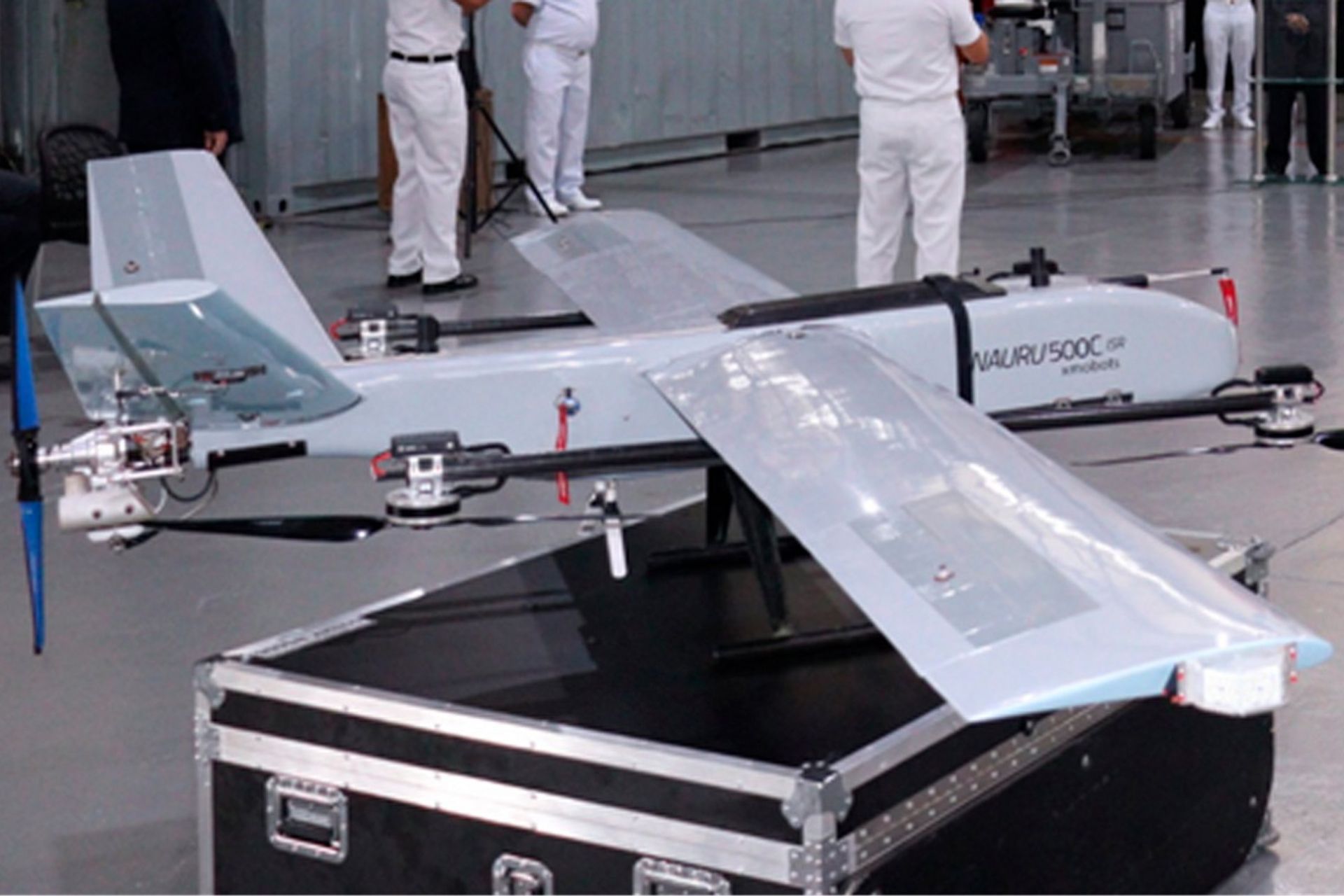Breaking News
New Drone Expands Brazilian Navy's Maritime Search and Rescue Capabilities.
According to information published by the Brazilian MoD on October 12, 2024, the Brazilian Navy’s Maritime Search and Rescue Service (SALVAMAR Brasil) has introduced a new remotely piloted aircraft, the NAURU 500C, now designated as "RQ-2", to enhance rescue operations along the Brazilian coast and inland waters.
Follow Army Recognition on Google News at this link

The new remotely piloted aircraft NAURU 500C. (Picture source: Brazilian MoD)
The drone, which was delivered during a ceremony at the Naval Air Force Command in São Pedro da Aldeia, Rio de Janeiro, is part of an ongoing initiative to modernize the Navy’s Search and Rescue Planning and Decision Support System (SPAD-SAR).
The RQ-2, capable of reaching a range of 60 kilometers, is designed to operate from both land and ship platforms. Its advanced technology is expected to improve search operations by offering real-time data and imagery through high-resolution cameras. With the ability to fly for up to four hours and conduct vertical take-offs and landings, the RQ-2 will significantly increase the efficiency and coverage of search and rescue missions, particularly in locating individuals in distress at sea.
The delivery of the drone follows a partnership between the Navy’s Maritime Operations Command, Shell Brasil Petróleo Ltda., CLS Brasil, and Xmobots.
Giovani Amianti, CEO of Xmobots, emphasized the RQ-2’s domestic development and its vertical take-off and landing capabilities, which eliminate the need for additional launch equipment. The drone is certified for Beyond Visual Line of Sight (BVLOS) operations, able to function in adverse weather conditions and at high altitudes, making it a versatile tool for intelligence, surveillance, and reconnaissance missions.
Brazilian Navy
The Brazilian Navy has made significant strides in integrating unmanned systems into its operations, reflecting a broader trend in modernizing its capabilities. A key development has been the activation of the 1st Remotely Piloted Aircraft Squadron (EsqdQE-1) in 2022.
This squadron operates six ScanEagle drones, which are used for a range of tasks, including intelligence, surveillance, reconnaissance, and disaster monitoring. These unmanned aerial systems (UAS) offer substantial advantages, such as extended operational range and 24/7 functionality, without the need for traditional runways.
In a related development, the Navy is also seeking to enhance its unmanned capabilities by considering Chinese drones, including the Mavic 3 and Matrice models, to further augment its fleet of unmanned aerial vehicles (UAVs).


























